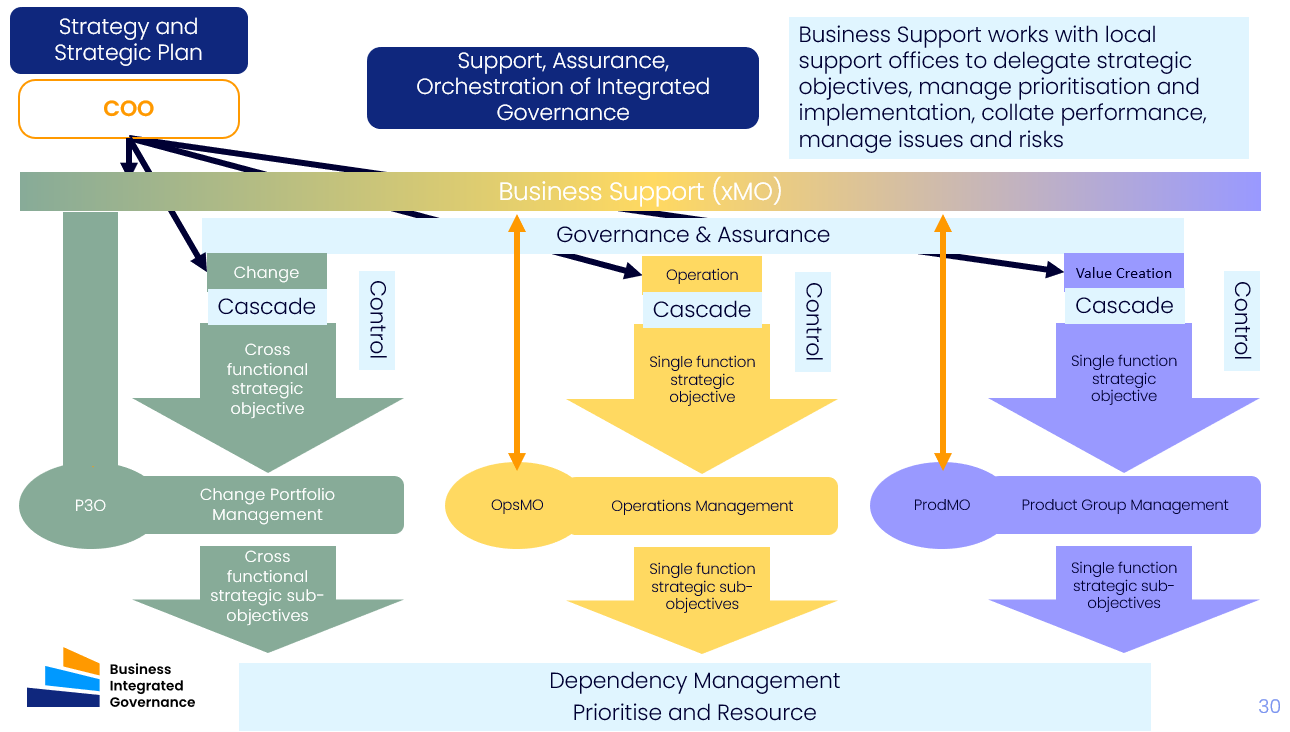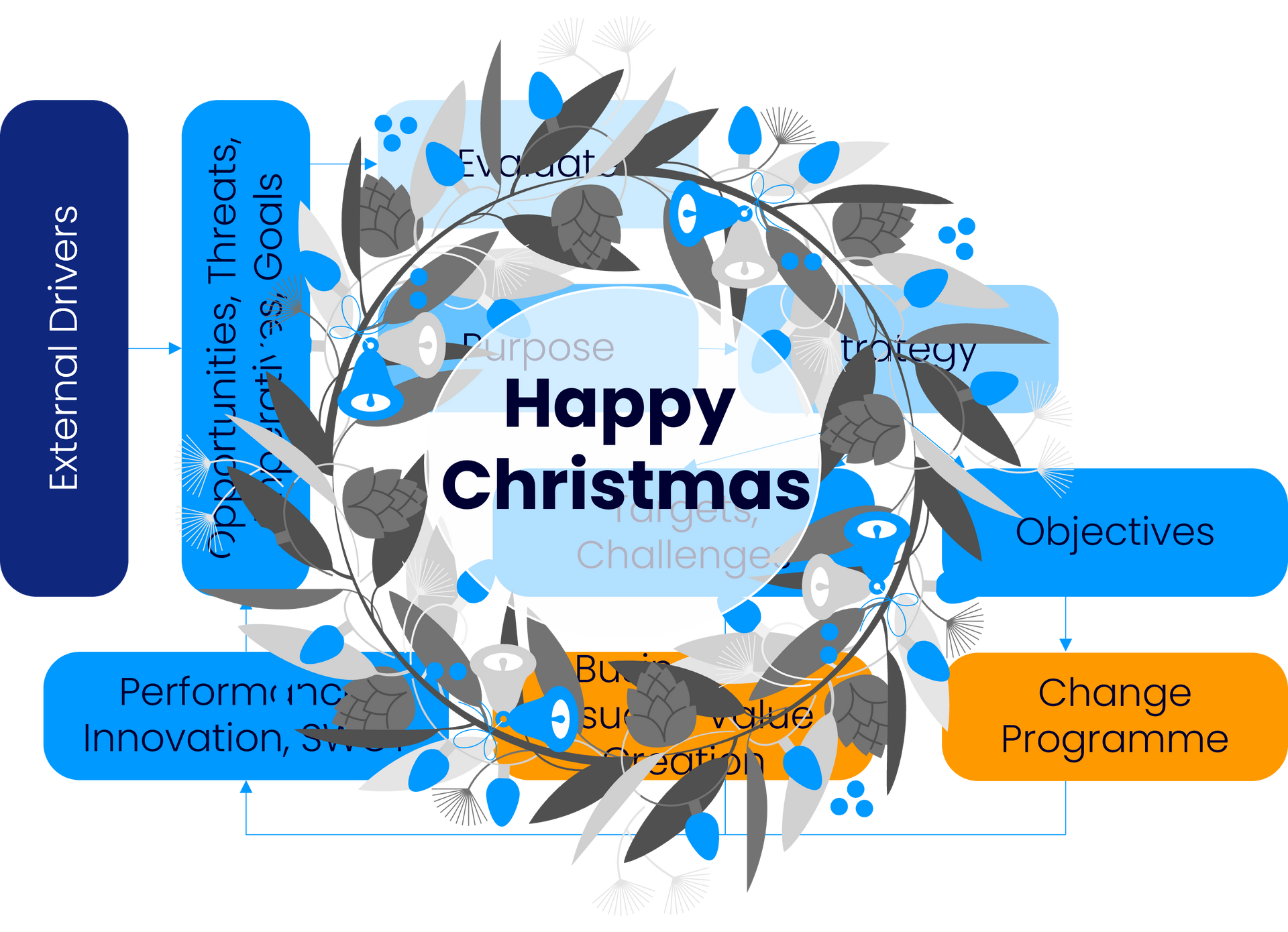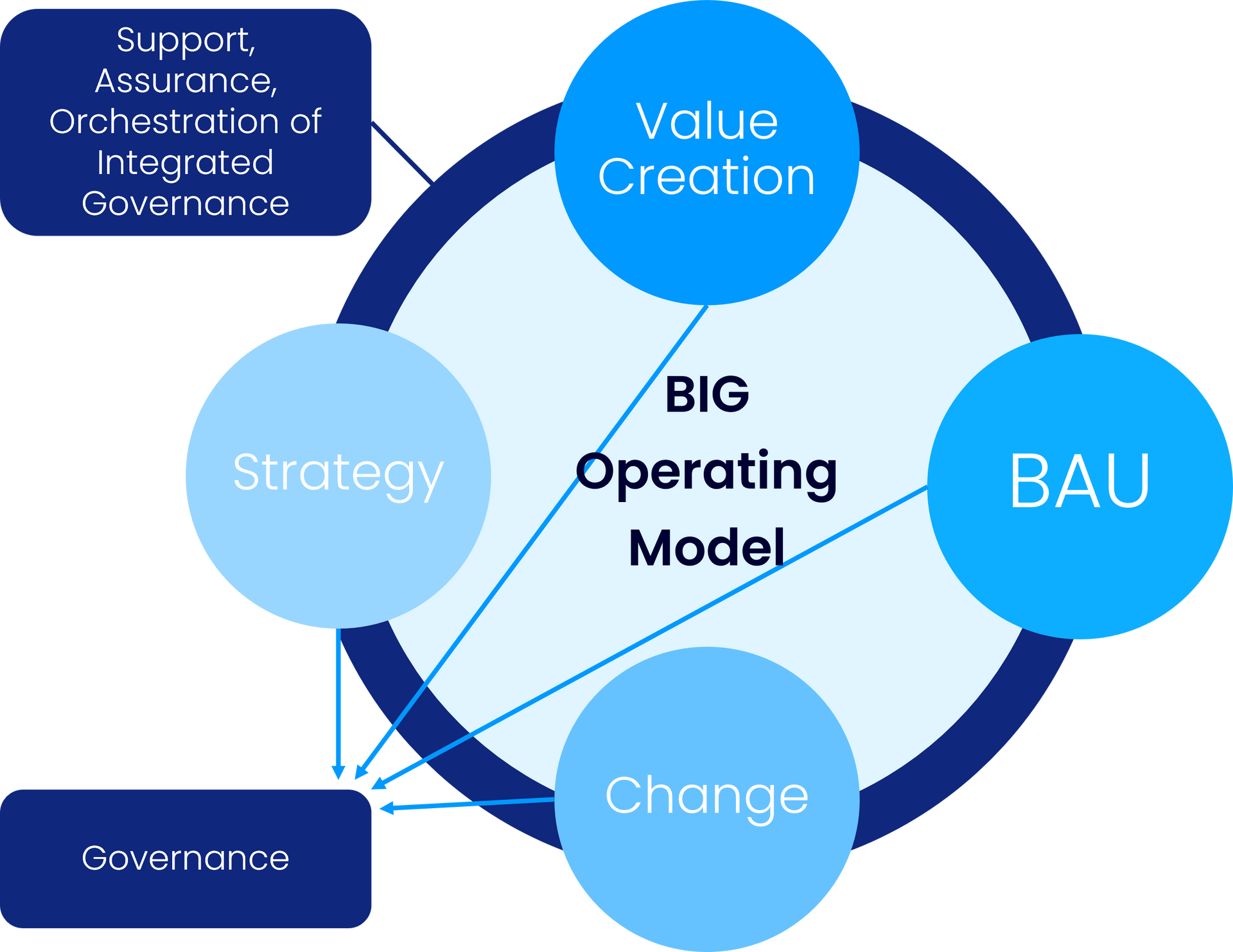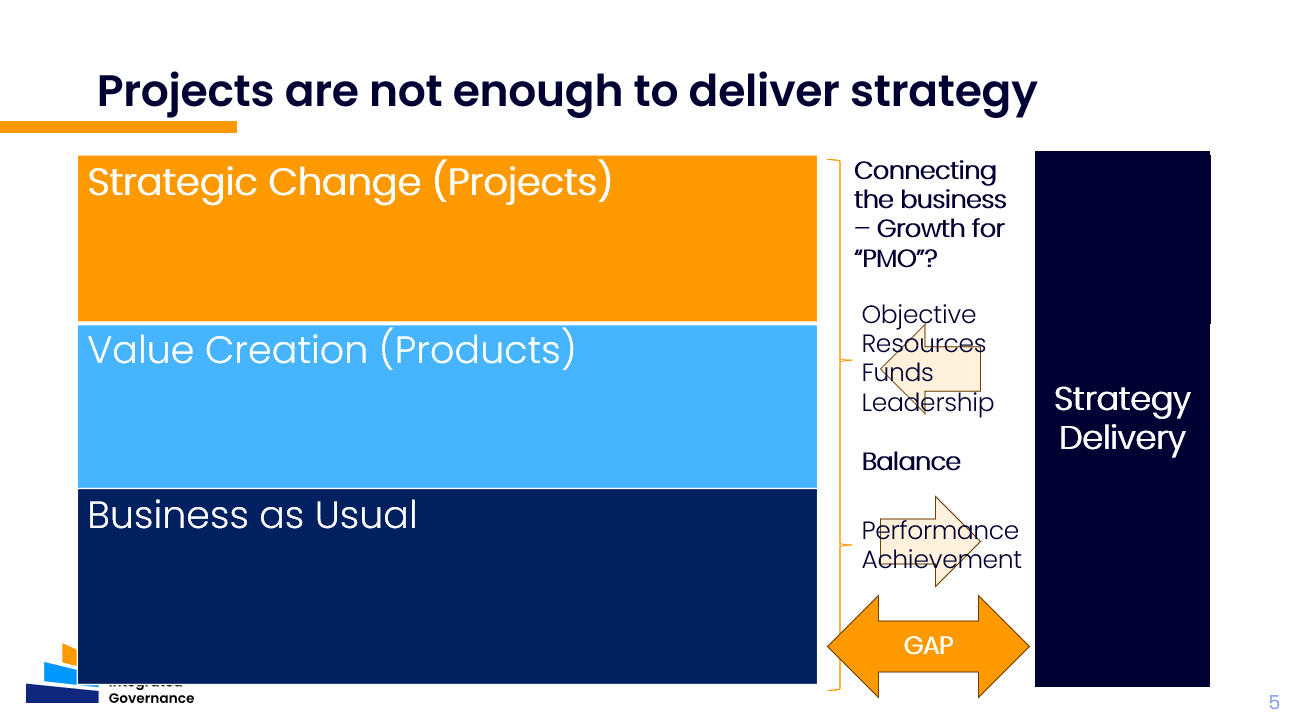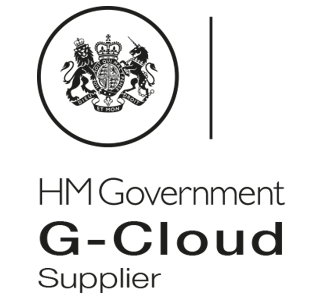Deepteam Blogs

Digital Transformation - Line of Sight?
Demand for digital is increasing. All of us realise there is benefit in bringing digital to our organisations. The trouble is - "digital" is a means to an end, not an end in itself - and most of our strategic plans are characterised with expectations of business outcomes, not just IT service levels.
What do we mean?
For example, an organisation may believe there are cost savings and wellbeing benefits from enabling "hybrid meeting rooms" where people can attend in person and gain the same experience remotely. This is an IT project to create a (clearly useful) facility with measurable benefits. In this case - the project is arguably an 'innovation' rather than something initiated to address a strategic objective and it can be completed as part of the Digital Transformation as a project that stands alone.
In another example, for a local authority, its 5-year plan contains "keep the Borough clean with more recycling and less waste" with a programme to "transform household recycling and waste collection". There may be no obvious IT input to more recycling and less waste, but the data and performance management IT platforms the authority has will provide key enablers to track collection data in real time. How much of the benefit from the transform household recycling and waste collection programme should be attributed to the invisible IT platforms, and how much cost for the IT platforms development should the transform household recycling and waste collection programme bear? Does it matter? Some will argue it does from the point view of creating the case and prioritising if nothing more. The IT platform is an example of a good "digital bet" that will come off for this and more possible positive outcomes.
Another example is the provision of cloud based shared services (e.g. payroll, HR, purchasing) for companies within a group as part of a (strategic) finance cost saving initiative, with Group IT function bearing the cost of the core platform. However, the emerging benefits would be secured by group companies leveraging the simplified processes with headcount redeployments. In this case, the business case justification goes across legal boundaries (despite being in the same group)
In all these cases, the business programmes are relying on the Digital Transformation Programme (set up within the IT function) to enable them to achieve their objectives. The first case is clear innovation, the second a side benefit form doing the right technology infrastructure, and the third, response to a direct strategic goal.
3 things should becoming apparent:
- The Digital Transformation Programme is accountable for few strategic goals directly - benefits emerge within the 'customer' organisation units through change programmes
- Candidate projects within the Digital Transformation Programme may be justified based on benefit estimations that the IT function will not be accountable for and will not be able to hold the other programmes accountable for either.
- The Digital Transformation Programme workload will need to be prioritised - which will be difficult as there are apples to compare with pears. Should I spend tomorrow working on Hybrid Meetings, IT Platform, or Shared Service?
Further questions then follow about prioritisation and justification :
- Who does the scoring? Is it the CIO? Will they arbitrate between CFO and COO sponsored projects? (when they probably work for the COO)
- How are the benefit claims justified / tested? Tough when benefit realisation and enablers are in separate organisation units.
- How does this stop from becoming a complete bunfight for finite resources?
- How is strategic alignment driven - or is it just 'claimed' in optimistic busienss cases?
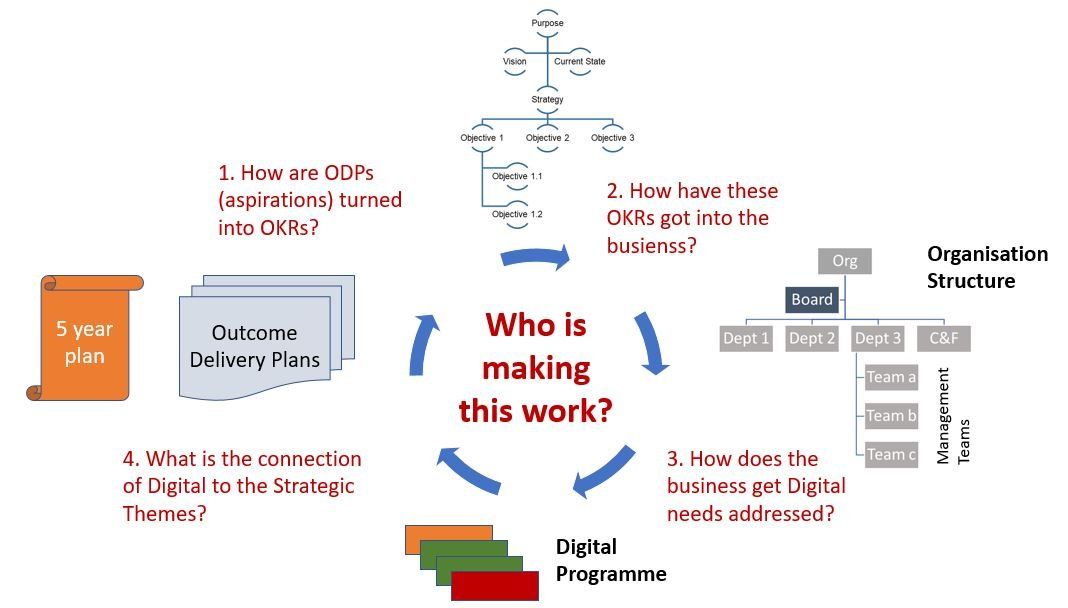
This scenario is at risk of becoming uncontrollable without several things:
- An integrated picture of the breakdown of objectives and sub objectives into measurable key results form all Outcome Delivery Plans (the business programmes), including how Digital transformation outcomes help. A centrally based approach will enable double benefit counting to be avoided, and strategic alignment claims to be verified
- A clear Accountability Map - showing which organisation unit is accountable to which for what - above and beyond it's line reporting - to enable accountability to work through the organisation and connect with the Digital Programme.
- Clarity on the enabler 'bets' being taken on infrastructure - as needs for some future capability may not materialise to the extent their provision suggested. (how many bets do you make and what do you stake on each?)
- A systematic approach to prioritisation, which is independently supported and subject to assurance review - to ensure the right objectives get the right leadership time, resources and funds.
Have you even thought about these things - or are you letting this scenario sort itself out?
The BIG Readiness model shines a light on how your overall governance ecosystem is working, to enable to you define how it should work - enabling a roadmap of improvement to be quickly and simply started.
Open
our discussion document covering 'Strategy to Delivery - objectively statusing readiness to achieve'
Access
the BIG Readiness tool - how ready are you for strategy delivery?
Want something more?
Talk to us about connecting strategy to delivery - and harmonising the programmes you run rather than set them against each other?

